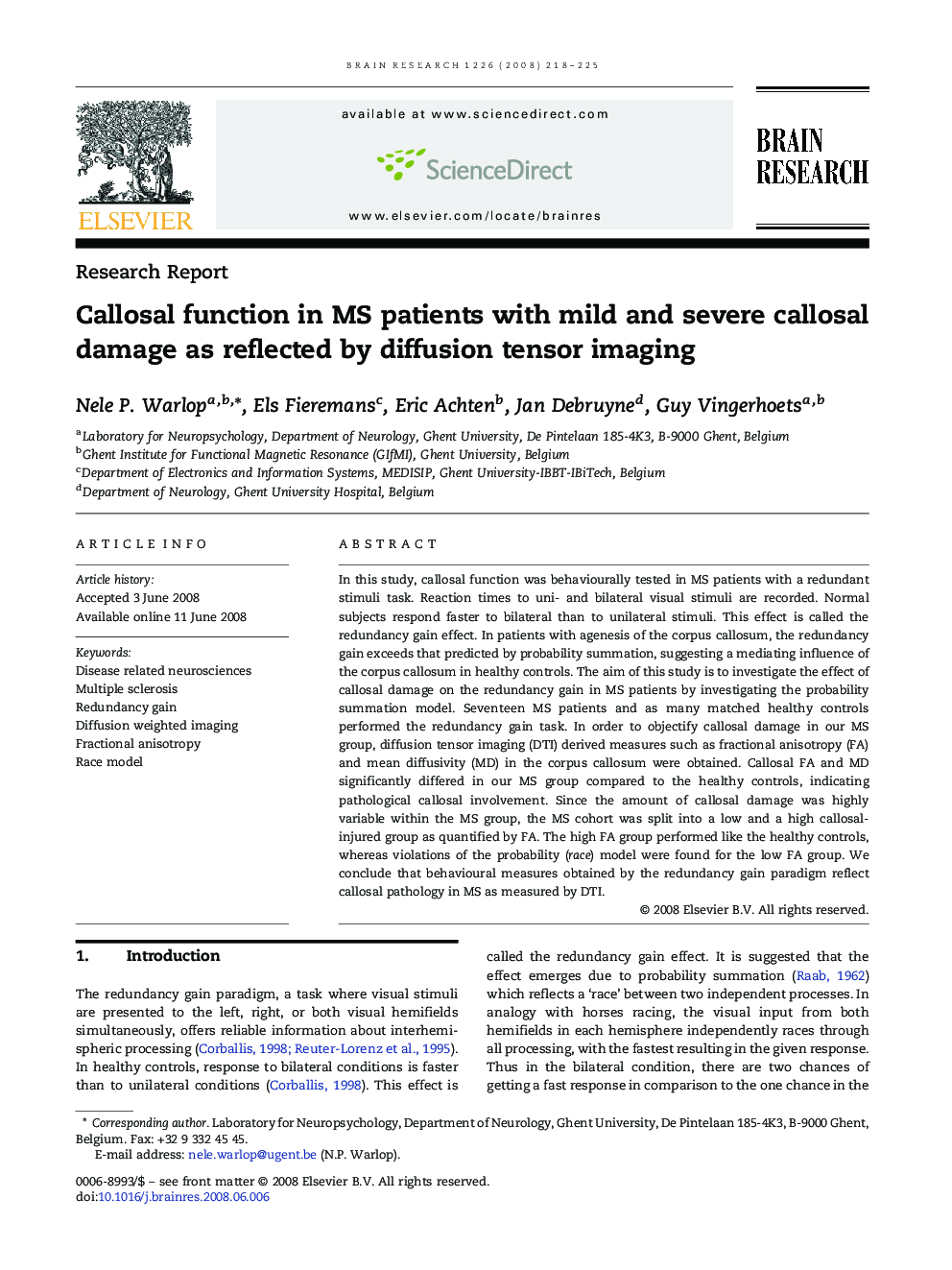| Article ID | Journal | Published Year | Pages | File Type |
|---|---|---|---|---|
| 4329408 | Brain Research | 2008 | 8 Pages |
Abstract
In this study, callosal function was behaviourally tested in MS patients with a redundant stimuli task. Reaction times to uni- and bilateral visual stimuli are recorded. Normal subjects respond faster to bilateral than to unilateral stimuli. This effect is called the redundancy gain effect. In patients with agenesis of the corpus callosum, the redundancy gain exceeds that predicted by probability summation, suggesting a mediating influence of the corpus callosum in healthy controls. The aim of this study is to investigate the effect of callosal damage on the redundancy gain in MS patients by investigating the probability summation model. Seventeen MS patients and as many matched healthy controls performed the redundancy gain task. In order to objectify callosal damage in our MS group, diffusion tensor imaging (DTI) derived measures such as fractional anisotropy (FA) and mean diffusivity (MD) in the corpus callosum were obtained. Callosal FA and MD significantly differed in our MS group compared to the healthy controls, indicating pathological callosal involvement. Since the amount of callosal damage was highly variable within the MS group, the MS cohort was split into a low and a high callosal-injured group as quantified by FA. The high FA group performed like the healthy controls, whereas violations of the probability (race) model were found for the low FA group. We conclude that behavioural measures obtained by the redundancy gain paradigm reflect callosal pathology in MS as measured by DTI.
Related Topics
Life Sciences
Neuroscience
Neuroscience (General)
Authors
Nele P. Warlop, Els Fieremans, Eric Achten, Jan Debruyne, Guy Vingerhoets,
